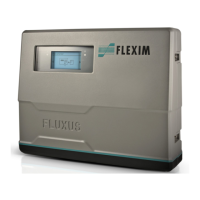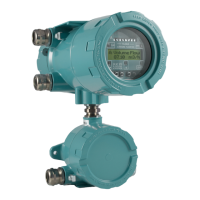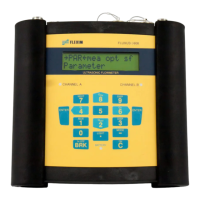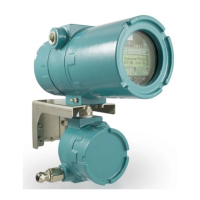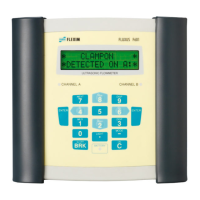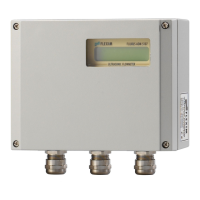3 General principles
3.1 Measurement principle FLUXUS H721
2022-05-15, UMFLUXUS_H721V1-5EN
14
Calculation of mass flow rate
The operating density of the fluid is calculated as a function of the API gravity and temperature of the fluid:
ρ = f(API, T)
The mass flow rate is calculated from the operating density and the volumetric flow rate:
= · ρ
where
3.1.1 Terms and abbreviations
3.1.2 HPI fluid data sets
The ASTM 1250 standard classifies hydrocarbons according to their API gravity:
The transmitter contains fluid data sets for the HPI measuring mode relating to the ASTM 1250 standard.
The table can be used to adapt the FLUXUS H721 to the application in the field. The expected fluids with their properties
are entered. Further calculations are adapted to the fluid.
ρ – operating density
API – API gravity
T – temperature
– mass flow rate
– volumetric flow rate
term/abbreviation explanation
HPI hydrocarbon processing industry
ASTM ASTM International (formerly known as American Society for Testing and Materials; an
international standardization organization)
standardized density density at reference conditions
fluid decision (table) HPI measuring mode with editable table
slope changes of an HPI physical quantity over time
Tab. 3.1: Main groups of liquid hydrocarbons
main group ρ
N
[kg/m
3
] API gravity T [°C] P [bar] class
(ASTM 1250)
CTL CPL
crudes, refin.
prod., lubricants
610.6…1163.5 -10…+100 -50…+150 0…100 cat. 1…6 MPMS 11.1 MPMS 11.2.1
LPG, NGL 350…637 90…275 -45…+60 0…100 ref. fluid
1…12
MPMS 11.2.4 MPMS 11.2.2
asphalts > 850 < 35 -45…+275 - group A/B ASTM 4311 -
Tab. 3.2: Fluid data sets of the FLUXUS H721 summarized in a table:Fluid data sets of the summarized in a table
data set main group ρ
N
[kg/m
3
] API gravity T [°C] P [bar] CTL CPL
universal crudes, refin. prod. 610…1000 10…100 0…100 0…100
ρ/ρ
N
MPMS 11.2.1
light ends LPG, NGL 427…780 50…200 -50…60 0…100
ρ/ρ
N
MPMS 11.2.2
heavy ends asphalts 875…1163 -10…+20 10…250 -
ρ/ρ
N
-
